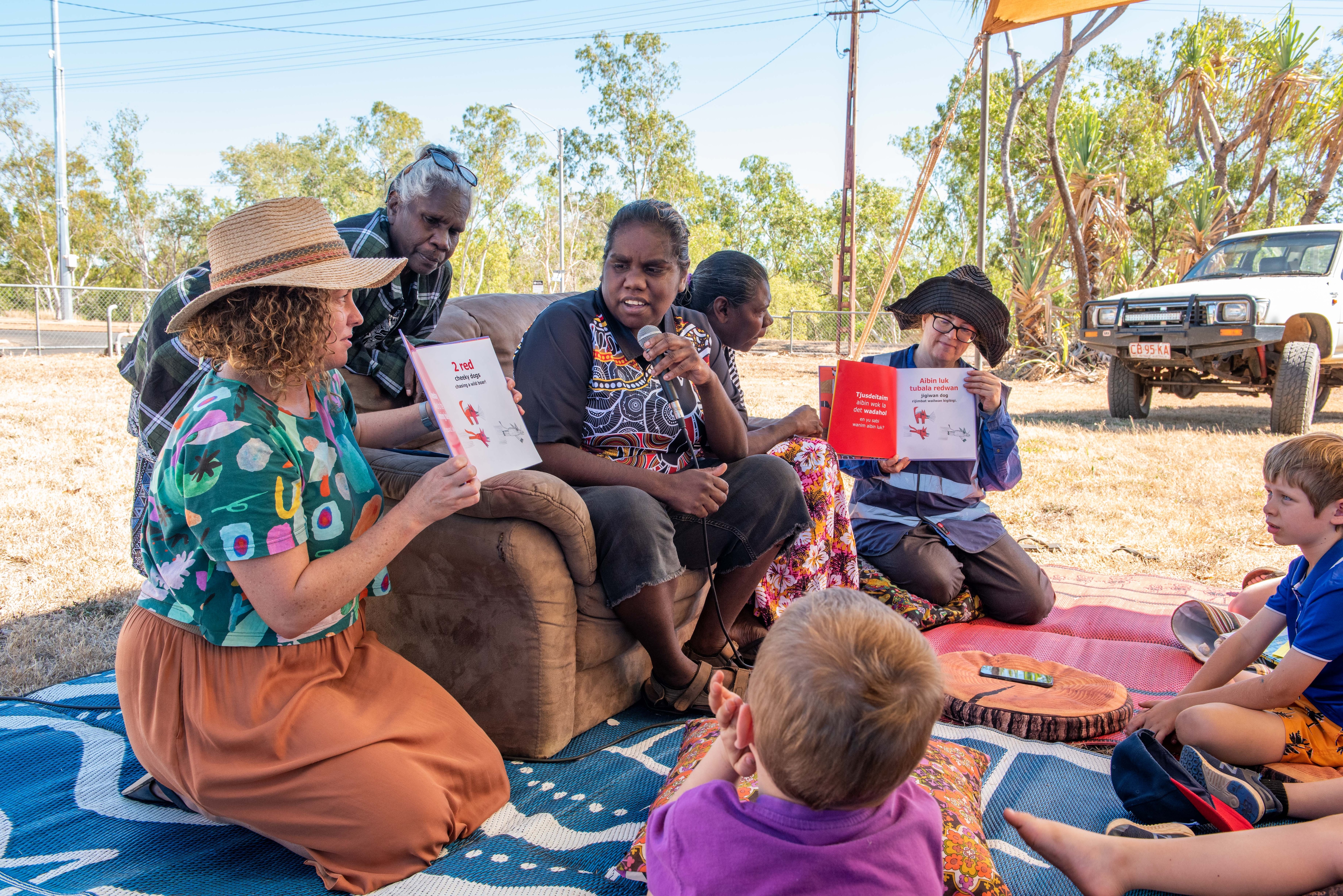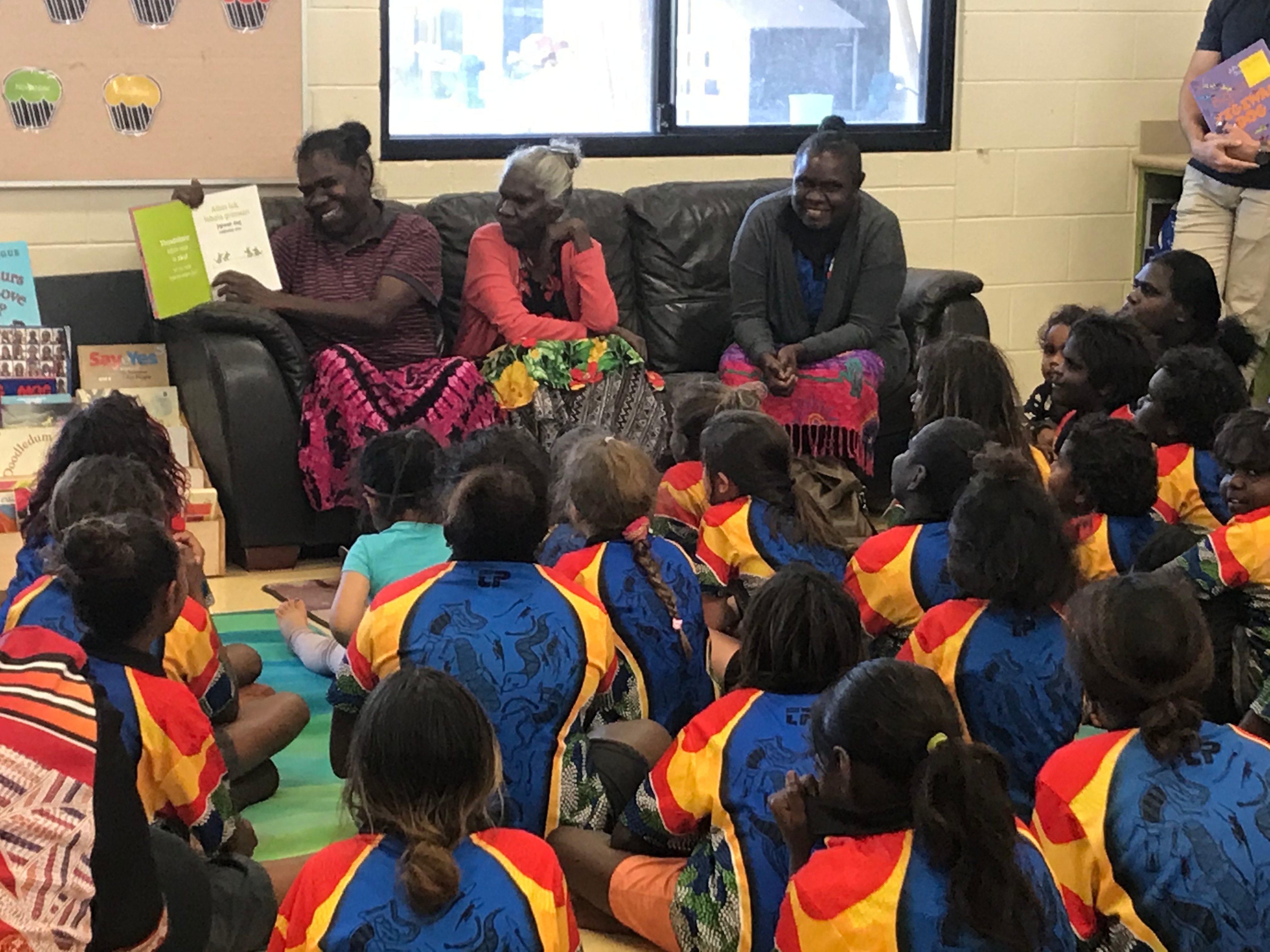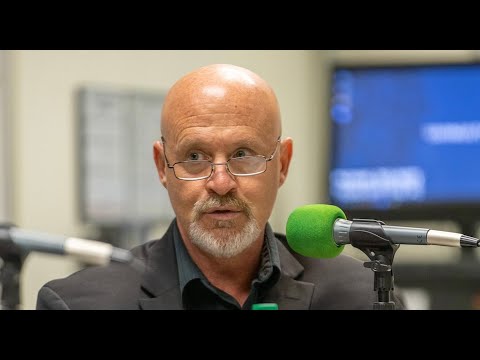In Ngukurr, a remote Aboriginal town in the Northern Territory, little remains of the area’s seven traditional languages.
Like hundreds of languages once spoken across Australia, colonisation has pushed the Arnhem Land community’s original tongues to the brink of extinction. But rather than English taking their place as colonisers and missionaries might once have imagined, a new Indigenous language now dominates Ngukurr’s playgrounds, homes and shops.
Almost all of Ngukurr’s 1,150 residents are fluent in Kriol – a hybrid of English and Aboriginal languages that is classified as a new Indigenous language borne out of colonisation.
Northern Australia’s Kriol is not just English with an Aboriginal spin, it has its own distinct vocabulary, pronunciation and systematic grammatical rules, making it incomprehensible to an English speaker.
For example, “my brother found Molly in the bush” translates to main braja bin faindim Moli jeya la bush.
An estimated 20,000 Indigenous people across the Top End speak Kriol, and that number is growing according to the National Indigenous Languages Report released in August.
The reason for that is simple, according to Glenda Robertson, a Kriol translator in Ngukurr.
“It’s grown because it’s the only language we can speak, properly fluently, the way we want to talk.”
Despite its spread across the Northern Territory, few of its thousands of speakers can read and write it properly – but Ms Robertson is part of a new organisation trying to change that.
Meigim Kriol Strongbala (Make Kriol Strong), an organisation founded last year, aims to increase Kriol literacy and build pride in the language.
Along with her mother, Carol Robertson – who worked on a Kriol translation of the Bible, completed in 2007 – and linguist Greg Dickson, they have produced a Kriol version of the popular children’s book Too Many Cheeky Dogs.
Bigismob Jigiwan Dog was published earlier this year by Allen and Unwin in what is believed to be the first book in Kriol put out by a major publisher.
(Listen to some Kriol in the video below. Article continues …)
The book, written by Johanna Bell and illustrated by Katherine artist Dion Beasley, tells the story of stray dogs that roam town making visits to “Aunty’s house”, the school and the oval.
Kriol’s battle for legitimacy
As well as providing a valuable education resource, the release of Bigismob Jigiwan Dog is a boost for the relatively new language that has battled for legitimacy.
“Because it’s done exactly like the English one, what I really like is kids at school see it and it’s a book that’s just as good as all the English books on the bookshelf,” Dr Dickson tells SBS News.
Speaking at the NT Writers’ Festival in October, Glenda Robertson told the audience she had not expected such a big reaction to the publication.
“I just thought we were going to translate it and then it would just be sitting around not doing much. I didn’t know we were going to be having a book launch and be talking in front of you mob,” she said.
Her daughter Shania Miller, who also works for Meigam Kriol Strongbala, says while Kriol may have less prestige than traditional languages in some people’s minds, she is proud of it.
“For the younger generation, Kriol is the only language that we know fluently so it’s very important that we introduce Kriol to the community at school. Even though it’s not one of the original seven [languages], it’s our original one.
“It’s the first language that I spoke so it’s a big part of my identity.”
It’s the first language that I spoke so it’s a big part of my identity.
– Shania Miller
Not everyone shares such pride in the new language given its short history and origins in a brutal colonisation.
The emergence of northern Australia’s Kriol is traced back to the Roper River Mission (now Ngukurr), established in 1909. Aboriginal children, separated from their parents, drew on pidgin English to develop a shared way to communicate with each other.
Over the next century, it has grown in complexity as it spread across northern Australia from the Kimberley in WA to the border of the Northern Territory and Queensland. Communities speak different dialects and, like other languages, it has evolved over time with the younger generation inclined to shorten words.
‘Confusing’ funding arrangements
Linguists won the battle to have Kriol officially recognised as a legitimate language in the 1950s, but it is still considered by many of its speakers as second rate and less culturally important than traditional languages. Some even partially blame Kriol’s spread for accelerating the decline of original languages.
But the National Indigenous Languages Report found it was unclear whether the growth of new languages has influenced the use of traditional ones.
Dr Dickson says he understands the reluctance to embrace Kriol, particularly where traditional languages are still spoken by elders, and strongly supports the work of language centres to preserve and revive them.
But, he says, Kriol also deserves recognition for its significant role in northern Australia’s rich language fabric.
The vexed status of Kriol has created a “confusing” funding arrangement where Meigim Kriol Strongbala is ineligible for funding under the federal government’s Indigenous Languages and Arts program.
Dr Dickson says it’s lucky that the local community, which has control over how a separate federal funding stream is spent, saw the value in using Kriol.
“Part of the reason was they saw attendance at the school was really low and community wasn’t engaging with school very much, so they thought Kriol would be a good way to build that up.”
Indigenous languages including Kriol have suffered from decades of restrictive education policies, including a Northern Territory Government requirement that teachers use only English for the first four (out of five) hours a day that was in place for more than three years up until 2012.
Children in Ngukurr are now encouraged to use their first language and learn to read and write it.
In only its first year in operation, Meigim Kriol Strongbala has begun running several sessions a week in the local school, has produced a Kriol alphabet chart, and translated a range of children’s books.
Shania Miller hopes the mainstream publication of Jigiwan Bigismob Dog will inspire more people in the community to write their own stories in Kriol.
“It will encourage more stories and then it will give an insight into what life’s like in communities.”
She urges non-Indigenous Australians to give Kriol a go too, particularly those visiting and working in Indigenous communities.
“There’s always an us and them mentality when they come in … we want them to embrace our culture and for us to do the same so we can get along.”
National NAIDOC Week was marked 8–15 November 2020 to celebrate the history, culture and achievements of Aboriginal and Torres Strait Islander peoples.
See more NAIDOC Week content from SBS and NITV and for more information about NAIDOC Week or this year’s theme, head to the official NAIDOC Week website.
#NAIDOC2020 #AlwaysWasAlwaysWillBe








